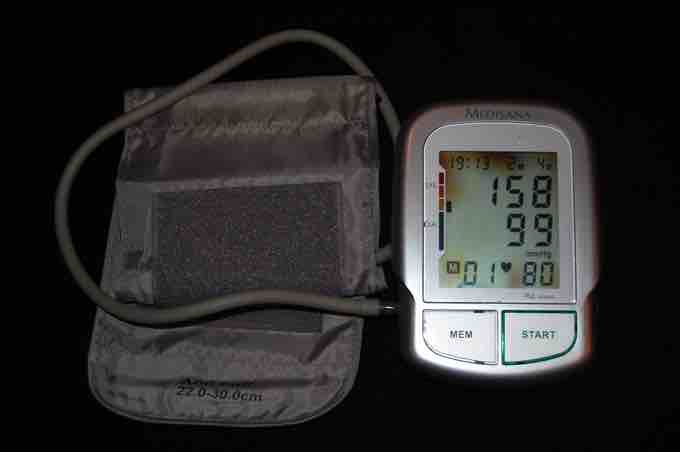Blood pressure is the pressure blood exerts on the arterial walls. It is recorded as two readings: the systolic blood pressure (the top number) occurs during cardiac contraction, and the diastolic blood pressure or resting pressure (the bottom number), occurs between heartbeats when the heart is not actively contracting.
A normal blood pressure is about 120 mmHg systolic over 80 mmHg diastolic. Usually the blood pressure is read from the left arm, although blood pressures are also taken at other locations along the extremities. These pressures, called segmental blood pressures, are used to evaluate blockage or arterial occlusion in a limb (for example, the ankle brachial pressure index).The difference between the systolic and diastolic pressure is called the pulse pressure.
The measurement of these pressures is usually performed with an aneroid or electronic sphygmomanometer . The classic measurement device is a mercury sphygmomanometer, using a column of mercury measured off in millimeters. In the United States and UK, the common form is millimeters of mercury (mm Hg), while elsewhere SI units of pressure are used. There is no natural or normal value for blood pressure, but rather a range of values that are associated with increased risks for disease and health:

A spygmomanometer
A blood pressure cuff and associated monitor used for determining systolic and diastolic pressures within an artery.
- Hypotension: under 90 mmHg systolic and under 60 mmHg diastolic.
- Normal: 90-119 mmHg systolic and 60-79 mmHg diastolic.
- Prehypertensive: 120-139 mmHg systolic and 80-89 mmHg diastolic.
- Hypertensive: 140 mmHg and above systolic and 90 mmHg and above diastolic.
The guidelines for acceptable readings also take into account other cofactors for disease, such as pre-existing health factors. Therefore, hypertension is indicated when the systolic number is persistently over 140–160 mmHg. Low blood pressure, or hypotension, is indicated when the systolic number is persistently below 90 mmHg.